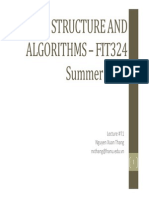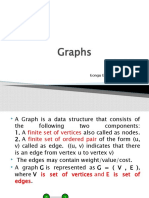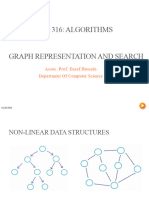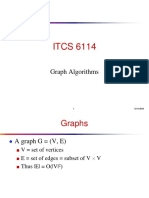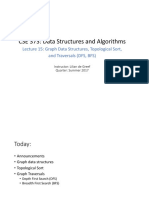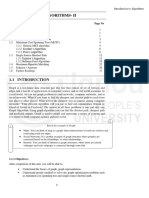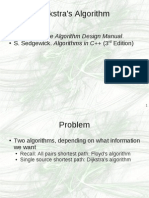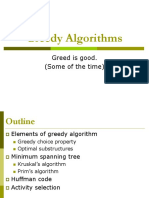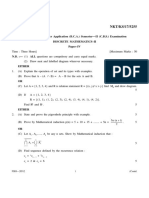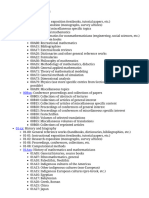0% found this document useful (0 votes)
21 views51 pagesWeek 11 Graphs
This document defines graphs and discusses their implementation and various algorithms used on graphs. It begins by defining what a graph is, how they are implemented using adjacency matrices and lists, and basic graph concepts like vertices, edges, paths, and connectivity. It then explains common graph algorithms like depth-first search, breadth-first search, topological sorting, and minimum spanning trees. Finally, it discusses how to handle directed and weighted graphs.
Uploaded by
nthha.ityuCopyright
© © All Rights Reserved
We take content rights seriously. If you suspect this is your content, claim it here.
Available Formats
Download as PDF, TXT or read online on Scribd
0% found this document useful (0 votes)
21 views51 pagesWeek 11 Graphs
This document defines graphs and discusses their implementation and various algorithms used on graphs. It begins by defining what a graph is, how they are implemented using adjacency matrices and lists, and basic graph concepts like vertices, edges, paths, and connectivity. It then explains common graph algorithms like depth-first search, breadth-first search, topological sorting, and minimum spanning trees. Finally, it discusses how to handle directed and weighted graphs.
Uploaded by
nthha.ityuCopyright
© © All Rights Reserved
We take content rights seriously. If you suspect this is your content, claim it here.
Available Formats
Download as PDF, TXT or read online on Scribd
/ 51




















